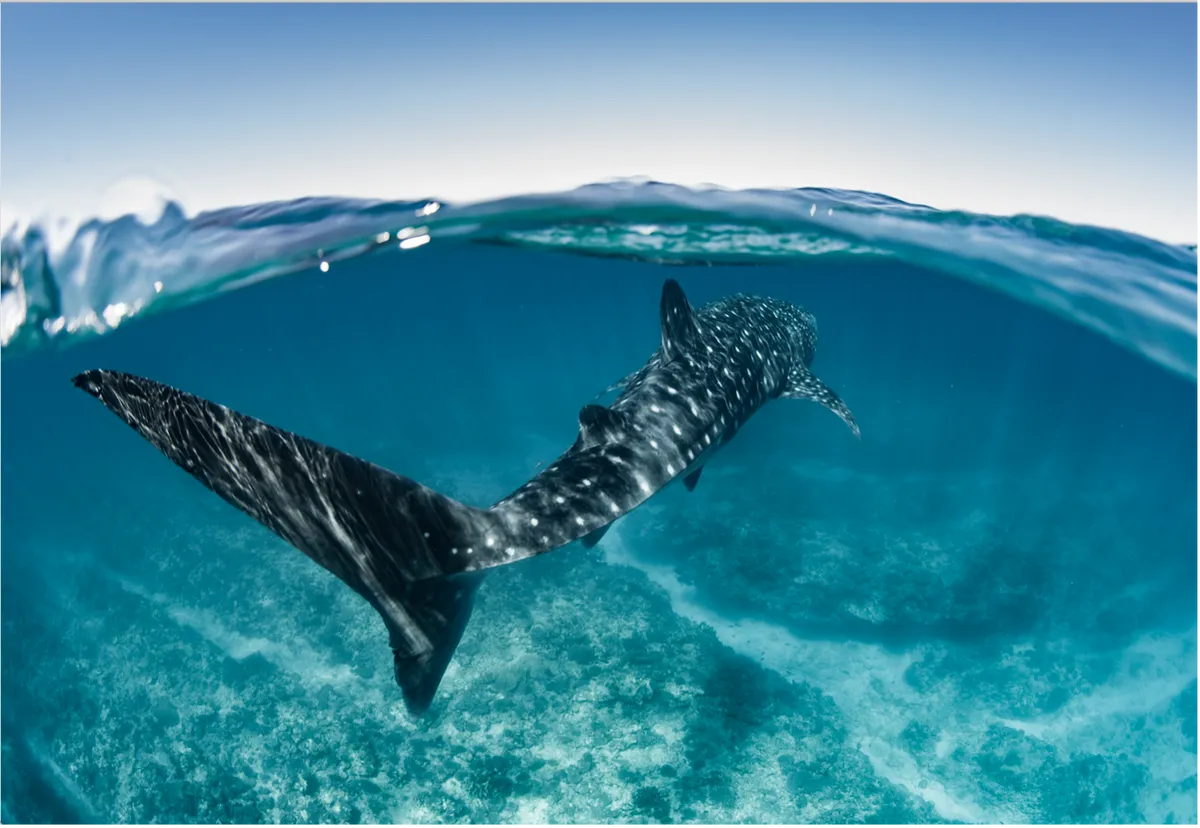More than 70 per cent of the Earth’s surface is covered in water. There’s an incredible variety of wildlife to be found beneath the surface, from sharks, whales and manta rays to endlessly fascinating varieties of fish, crabs, turtles and seahorses.
It takes commitment and time to master underwater photography. First, you need to be a confident swimmer and, ideally, a skilled scuba diver or freediver (diving without scuba gear), able to control and position yourself in the water. You won’t get many great photos if you’re flapping your arms and legs about or sinking to the ocean floor.
Being in control also means not disturbing the habitat. Dragging scuba fins along the ocean floor, for example, will cloud the water with sand, which is bad for photos, not to mention potentially damaging to the habitat itself.
In terms of composition and settings, the same photography skills are needed in water as on land, but the process is made trickier by the fact it’s harder to see your settings, and that you might need to make changes while wearing scuba gloves. You’ll also need to contend with underwater conditions, where water can be silty and ‘low vis’, and the differing way in which the light travels.
Yet it's incredibly enjoyable to explore underwater worlds, letting your creativity loose on shoals of colourful fish or coral formations and keeping an eye out for the giants of the deep. Being in the water allows you to move not just around your subject, but below it and above it. Underwater photographer Shawn Heinrichs, for example, often photographs manta rays and whale sharks from below, catching their silhouettes set against the ocean surface.
Other creative possibilities range from portraits of a creature in isolation, interactions between species (sharks and bait balls are always popular), capturing multitudes of fish, or using formations and elements of underwater landscapes.
While Indonesia, Mexico or Tonga might offer some of the best marine life on Earth, you can get started closer to home in the UK's seas, lakes and rivers – but always consider safety aspects before getting into the water.
- Camera manual settings explained: how to use manual settings to take stunning photographs
- How to photograph the movement and motion of wildlife
- Expert tips on how to photograph autumn wildlife
- Best gifts for wildlife photographers
- How to take great macro photographs of wildlife
- How to take striking animal portrait photographs
Specialist equipment for underwater photography
You need a specialist underwater camera or a waterproof housing, as well as, in most cases, scuba gear. Underwater photographer Aimee Jan, who lives in Western Australia and spends most of her life photographing the marine life of the Ningaloo Reef, uses a Nikon 8-15mm F/3.5-4.5E ED AFS with a fisheye lens. "I keep my lens at 15mm because otherwise you get black edges around your photos," she says. "Because it’s a fisheye lens, it’s wide enough for whale sharks and other large marine species. You can fit the whole animal in, even when you’re just a few metres away, and the image is sharp the whole way through."
Aimee's tips for great underwater shots
1. Be relaxed and confident
"If you get in the water and start chasing animals, they wonʼt stick around. It’s so important to be relaxed and respectful of wildlife - it shows in photos if your subjects are stressed. Things can happen quickly, so make sure you know your camera well in case you need to change settings suddenly. Finding where the buttons are is harder when it’s in a housing."
2. Get close
"The water is full of particles, so it’s very different than shooting on land, where there isnʼt much getting between your lens and the subject. Within reason, and without causing disturbance or stress, get as close to your subject as you can, to take away as much of the dense water as possible."
3. Use natural light
"If the water visibility is low, you really need to have the sun behind you. If you’re shooting into the sun, all of the particles are going to light up and your photos could look bad. But shooting into the sun can make for beautiful photos too, such as silhouette shots. I always shoot with natural light - I donʼt like the thought of spooking animals with flash."
Read about Aimee and see more of her work at oceanaimee.com
How to get started in underwater photography
Aimee captured this stunning shot of a whale shark off the Ningaloo Reef, Western Australia. Here is why the image works.

1. Split level
Split-level shots - which capture both the underwater world and the land or space above it - reveal just how close to the surface marine creatures often are. This whale shark image is a case in point. You can achieve interesting juxtapositions by including boats or land above the surface and wildlife below it.
2. Creative framing
In this shot, the curve of the ocean surface creates a natural frame for the whale shark. Focus is maintained on the animal and there’s a clear and important gap between the frame and its fin.
3. Rear view
Rather than opting for a face-on or even a top-down look at the whale shark, focusing on its mighty tail and massive spotted body gives a real sense of scale and of the shark's graceful movement through the water.
Main image: A great hammerhead shark, Bahamas © Getty